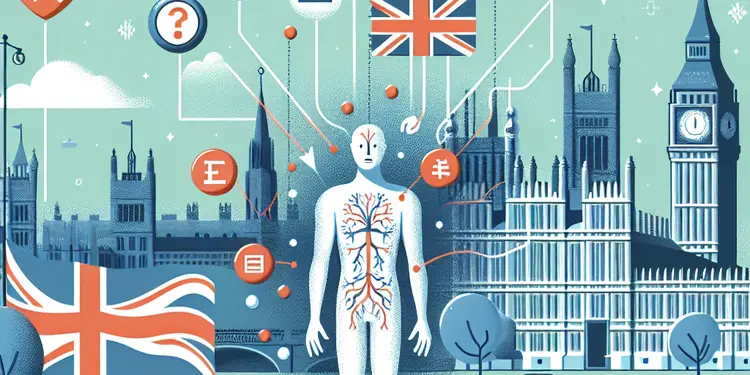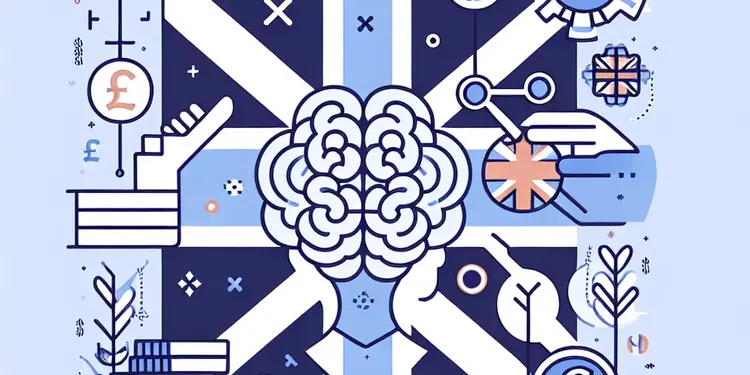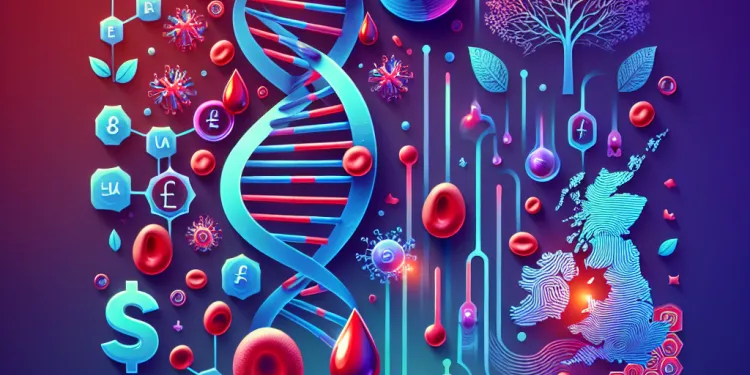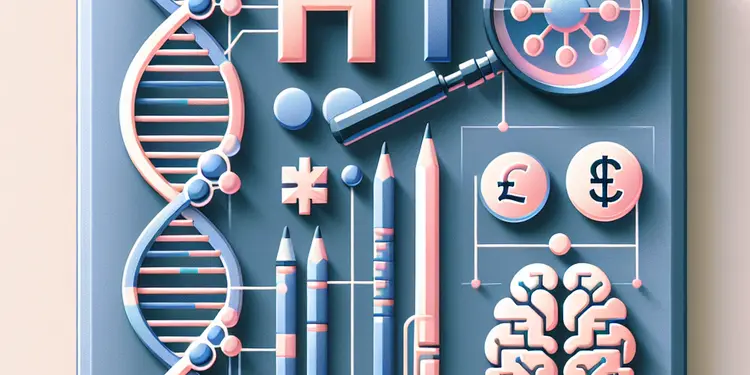
Find Help
More Items From Ergsy search
-

What is Huntington's disease?
Relevance: 100%
-

Can Huntington's disease be prevented?
Relevance: 99%
-

What causes Huntington's disease?
Relevance: 98%
-

Is Huntington's disease fatal?
Relevance: 97%
-

How is Huntington's disease inherited?
Relevance: 94%
-

Can Huntington's disease be cured?
Relevance: 94%
-

How is Huntington's disease diagnosed?
Relevance: 88%
-

At what age do symptoms of Huntington's disease typically appear?
Relevance: 84%
-

How does Huntington's disease affect emotions?
Relevance: 84%
-

What is the role of genetic testing in Huntington's disease?
Relevance: 84%
-

What kinds of specialists are involved in treating Huntington's disease?
Relevance: 83%
-

What are the symptoms of Huntington's disease?
Relevance: 83%
-

What research is being done on Huntington's disease?
Relevance: 83%
-

How does Huntington's disease affect movement?
Relevance: 78%
-

How does Huntington's disease affect cognition?
Relevance: 78%
-

Can lifestyle changes help manage Huntington's disease?
Relevance: 72%
-

What is Juvenile Huntington's disease?
Relevance: 68%
-

How is sickle cell disease inherited?
Relevance: 68%
-

Are there treatments available for Huntington's disease?
Relevance: 60%
-

What role does the HTT gene play in Huntington's disease?
Relevance: 59%
-

What support is available for families affected by Huntington's disease?
Relevance: 58%
-

What is inheritance tax in the UK?
Relevance: 49%
-

What is inheritance tax in the UK?
Relevance: 48%
-

When is inheritance tax due to be paid?
Relevance: 44%
-

Can ADHD be inherited?
Relevance: 44%
-

What is the process for paying inheritance tax?
Relevance: 44%
-

Is motor neurone disease hereditary?
Relevance: 44%
-

Handling Inheritance Disputes Legally
Relevance: 44%
-

What is Mitochondrial disease?
Relevance: 43%
-

What is sickle cell disease?
Relevance: 43%
-

Can my spouse inherit my basic State Pension?
Relevance: 43%
-

Can an inheritance tax bill be challenged or appealed?
Relevance: 43%
-

What is the seven-year rule relating to inheritance tax?
Relevance: 42%
-

Does owning property abroad affect UK inheritance tax?
Relevance: 41%
-

Is there any inheritance tax exemption for spouses or civil partners?
Relevance: 41%
-

Mortgage on Inherited Property - How we can help you with the finance
Relevance: 41%
-

How can I plan efficiently to mitigate inheritance tax?
Relevance: 41%
-

How does inheritance tax affect non-UK domiciled individuals?
Relevance: 40%
-

Introduction to Sickle cell disease
Relevance: 40%
-

Do unpaid tax debts affect Inheritance Tax calculations?
Relevance: 40%
Introduction to Huntington's Disease
Huntington's disease is a genetic disorder that affects the brain, leading to the progressive degeneration of nerve cells. It is an autosomal dominant condition, meaning that an individual only needs one copy of the defective gene to develop the disorder. The disease typically manifests in mid-adulthood, though symptoms can appear at any stage of life. Common symptoms include movement disorders, cognitive decline, and psychiatric issues. Understanding the inheritance pattern of Huntington's disease is crucial for affected families, as the risk of transmission to future generations exists.
Genetic Basis of Huntington's Disease
The cause of Huntington's disease is a mutation in the HTT gene, which is located on chromosome 4. This gene typically provides instructions for producing a protein called huntingtin, which is important for normal brain function. In individuals with Huntington's disease, the HTT gene contains an abnormal number of CAG repeats—a segment of DNA within the gene. While the normal number of CAG repeats is less than 36, individuals with Huntington's disease typically have 36 or more repeats. The unusual repeat expansion leads to the production of an abnormally long version of the huntingtin protein, ultimately resulting in toxic effects on neurons.
Inheritance Pattern
Huntington's disease is inherited in an autosomal dominant manner, which significantly impacts how the disorder is passed from one generation to the next. In autosomal dominant inheritance, only one copy of the mutated gene is sufficient to cause the disorder. Thus, if one parent carries the defective HTT gene, there is a 50% chance during each pregnancy that the offspring will inherit the disorder. This means that both males and females have an equal likelihood of being affected, and they can equally pass the condition on to their children.
Genetic Testing and Family Planning
Genetic testing plays a pivotal role in diagnosing Huntington's disease, especially for those with a family history of the condition. A blood test can reveal the number of CAG repeats in the HTT gene, aiding in determining whether an individual is likely to develop symptoms. Carrier testing for at-risk family members can help in making informed decisions about family planning. For couples who are considering having children and where one partner has or is at risk for Huntington’s disease, genetic counseling and options such as prenatal testing or preimplantation genetic diagnosis (PGD) may be considered.
Conclusion
Understanding how Huntington's disease is inherited helps families make informed choices about health and family planning. As an autosomal dominant condition, each child of an affected parent has a significant risk of inheriting the disorder. Scientific advancements in genetic testing and counseling offer valuable resources for those concerned about the implications of Huntington's disease, enabling affected individuals and their families to navigate the challenges associated with this condition.
What is Huntington's Disease?
Huntington's disease is an illness that affects the brain. It causes the nerve cells in the brain to slowly break down. This disease is passed down through families. It happens if you get just one bad gene from your parents. Most people notice the illness when they are grown up, but it can show up at any age. People with Huntington's have trouble moving, thinking, and may feel sad or worried. Knowing how this disease is passed on is important for families who have it.
Why Does Huntington's Disease Happen?
Huntington's disease is caused by a change in a gene called HTT, which is on chromosome 4. This gene tells the body to make a protein called huntingtin. This protein is important for the brain to work well. People with Huntington's have too many CAG repeats in the HTT gene. If there are 36 or more repeats, it causes the protein to be too long and it hurts the brain cells.
How is Huntington's Disease Passed Down?
Huntington's disease is passed from parent to child. You only need one bad gene to get the disease. If a parent has the gene, there is a 50% chance their child will get it too. Boys and girls can both get Huntington's disease and pass it to their own children.
Testing for Huntington's Disease
Doctors can use a blood test to see if someone has the gene for Huntington's disease. This is important if people in the family have had the disease. Knowing if you have the gene can help you decide about having children. Families can talk to a genetic counselor to learn more. If you are planning to have kids and worried about Huntington's, you can explore options like testing during pregnancy.
Understanding Huntington's Disease
Learning how Huntington's disease is passed down helps families make important decisions about health and having children. Since a child with a parent who has Huntington’s has a high chance of getting it, knowing the facts can help. Genetic testing and counseling can provide support for families dealing with Huntington's disease. These tools help families handle what comes with the disease.
Frequently Asked Questions
Useful Links
- Ergsy carfully checks the information in the videos we provide here.
- Videos shown by Youtube after a video has completed, have NOT been reviewed by ERGSY.
- To view, click the arrow in centre of video.
- Most of the videos you find here will have subtitles and/or closed captions available.
- You may need to turn these on, and choose your preferred language.
- Go to the video you'd like to watch.
- If closed captions (CC) are available, settings will be visible on the bottom right of the video player.
- To turn on Captions, click settings .
- To turn off Captions, click settings again.
More Items From Ergsy search
-

What is Huntington's disease?
Relevance: 100%
-

Can Huntington's disease be prevented?
Relevance: 99%
-

What causes Huntington's disease?
Relevance: 98%
-

Is Huntington's disease fatal?
Relevance: 97%
-

How is Huntington's disease inherited?
Relevance: 94%
-

Can Huntington's disease be cured?
Relevance: 94%
-

How is Huntington's disease diagnosed?
Relevance: 88%
-

At what age do symptoms of Huntington's disease typically appear?
Relevance: 84%
-

How does Huntington's disease affect emotions?
Relevance: 84%
-

What is the role of genetic testing in Huntington's disease?
Relevance: 84%
-

What kinds of specialists are involved in treating Huntington's disease?
Relevance: 83%
-

What are the symptoms of Huntington's disease?
Relevance: 83%
-

What research is being done on Huntington's disease?
Relevance: 83%
-

How does Huntington's disease affect movement?
Relevance: 78%
-

How does Huntington's disease affect cognition?
Relevance: 78%
-

Can lifestyle changes help manage Huntington's disease?
Relevance: 72%
-

What is Juvenile Huntington's disease?
Relevance: 68%
-

How is sickle cell disease inherited?
Relevance: 68%
-

Are there treatments available for Huntington's disease?
Relevance: 60%
-

What role does the HTT gene play in Huntington's disease?
Relevance: 59%
-

What support is available for families affected by Huntington's disease?
Relevance: 58%
-

What is inheritance tax in the UK?
Relevance: 49%
-

What is inheritance tax in the UK?
Relevance: 48%
-

When is inheritance tax due to be paid?
Relevance: 44%
-

Can ADHD be inherited?
Relevance: 44%
-

What is the process for paying inheritance tax?
Relevance: 44%
-

Is motor neurone disease hereditary?
Relevance: 44%
-

Handling Inheritance Disputes Legally
Relevance: 44%
-

What is Mitochondrial disease?
Relevance: 43%
-

What is sickle cell disease?
Relevance: 43%
-

Can my spouse inherit my basic State Pension?
Relevance: 43%
-

Can an inheritance tax bill be challenged or appealed?
Relevance: 43%
-

What is the seven-year rule relating to inheritance tax?
Relevance: 42%
-

Does owning property abroad affect UK inheritance tax?
Relevance: 41%
-

Is there any inheritance tax exemption for spouses or civil partners?
Relevance: 41%
-

Mortgage on Inherited Property - How we can help you with the finance
Relevance: 41%
-

How can I plan efficiently to mitigate inheritance tax?
Relevance: 41%
-

How does inheritance tax affect non-UK domiciled individuals?
Relevance: 40%
-

Introduction to Sickle cell disease
Relevance: 40%
-

Do unpaid tax debts affect Inheritance Tax calculations?
Relevance: 40%


